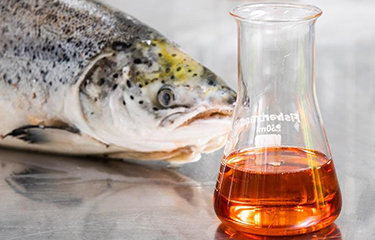Two-thirds of the quota allowed in Peru’s second anchoveta season has already been caught, which has helped to narrow the global production gap that has posed problems in the fishmeal and fish oil sector.
As of 19 December, 1.1 million metric tons of the 1.6-million-ton quota had been landed, according to La Republica. However, 32.6 percent of the total, or 360,660 MT, were measured less than 12 centimeters, classifying them as juveniles. Peru's Production Ministry has not indicated whether it plans to close the fishery as a result, despite protests from some fishing groups that such a high juvenile catch rate could jeopardize the fishery's future fecundity.
The season’s early start – in October 2023 compared to its typical start in November – resulted in a bump in year-over-year production totals through October 2023. Nevertheless, the cancelation of Peru’s first anchoveta season in June 2023 resulted in year-to-date fishmeal production through October 2023 falling 22 percent compared to cumulative production over the same time period in 2022. Peru's Central Bank has predicted the country's seafood production will fall 17.6 percent by volume in 2023.
“The predominant factor contributing to this decline must be attributed to the 60 percent year-over-year decrease in Peru, whose activities were heavily affected by the El Niño phenomenon and the subsequent cancelation of the April-June first fishing season of the year,” IFFO – The Marine Ingredients Organization stated.
Global fish oil production through October 2023 was down 20 percent compared to the same period of 2022. That's actually an improvement from the 21 percent decline for fish oil recorded in September 2023. Fishmeal production was down 26 percent year on year in September 2023.
“The supply shortage in Peru, due to both fewer landings and lower oil yields, was here again the main cause for such negative performance,” IFFO stated.
The closure of the U.S. menhaden fishing season in November 2023 further curtailed supplies. However, with cratering demand due to a broad downturn in seafood sales globally, fishmeal prices remained low, the IFFO reported.
Chile was the only country that experienced greater higher year-over-year production through October 2023, thanks to improved catches and higher-than-average oil yields, IFFO reported.
In China, domestic fishmeal and fish oil production remained steady compared to 2022, but demand has declined and inventories have grown. China’s fishmeal imports, meanwhile, were down 9.4 percent between January and November 2023.
“China’s 2023 fishmeal consumption in aquaculture is not expected to surpass that of 2022, although a rebound in the global supply of marine ingredients might open new scenarios,” IFFO stated. “Similarly, the pig sector is grappling with subdued prices, hovering around a low point. The anticipated higher seasonal demand for the period November-February has yet to materialize. At this point in time, farmers are banking on improvements in the second half of 2024.”
Photo courtesy of IFFO







